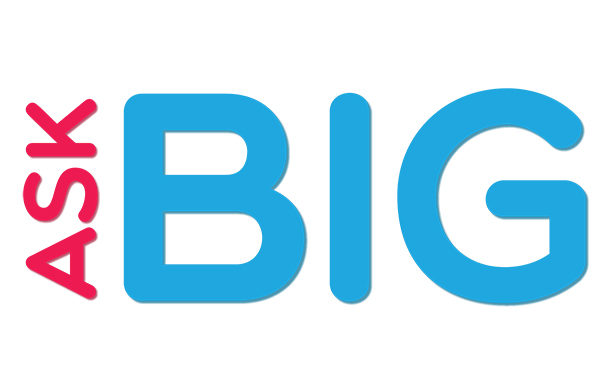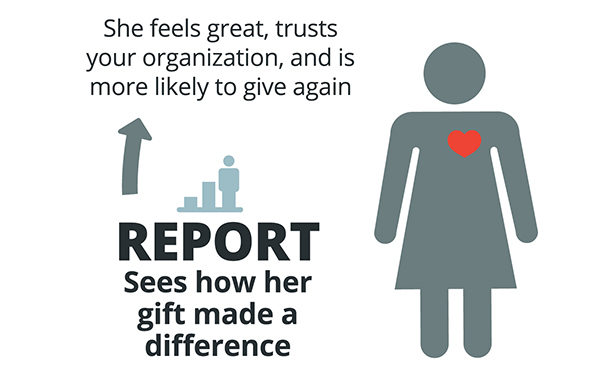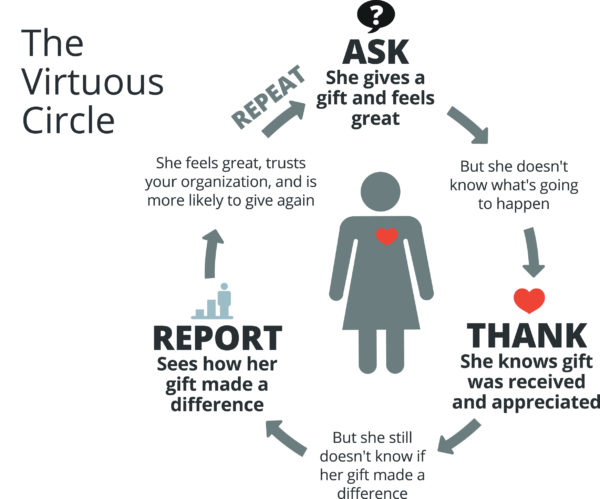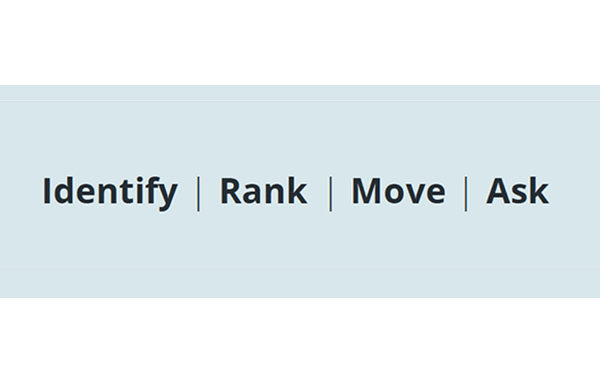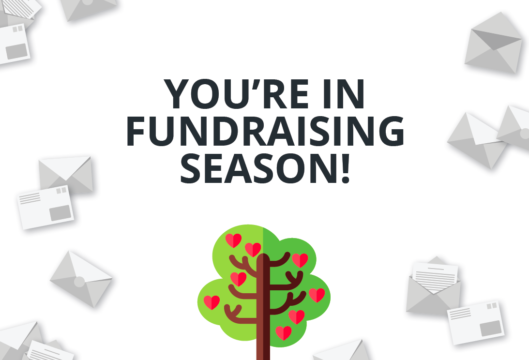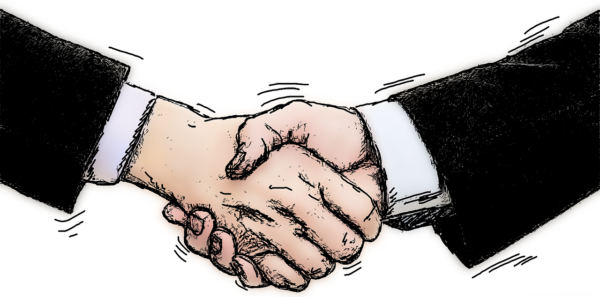Over my 20 years of doing and teaching major donor fundraising, I’ve noticed something that small nonprofits should pay attention to:
Organizations that have a systematic approach to major donor fundraising raise the most money and have the most satisfied donors.
It’s really that simple.
The system that I recommend has 4 easy-to-follow steps. And if you do them right you’ll honor your donors, deepen your organization’s relationship with them, and raise more money.
Don’t get me wrong, installing this system takes real work. But the work isn’t hard – especially when compared to the personal and financial results you’ll see!
Let’s get to it . . .
Step #1 – Identify exactly who your major donors are
- If you already have very specific criteria for who is a major donor, or your organization is currently managing major donors, move to step #2.
- If not, then pull a list of all donors that gave your organization a gift in the last 24 months. Sort them by total giving. The donors at the top of the list are your major donors.
- I realized that “the top of your list” is a little imprecise. But it varies wildly by organization. The main principle is to identify the donors who give the lion’s share of your donations, call them your major donors, and then cultivate them with more time and effort than your other donors. If you have less than 100 donors, treat all your donors like major donors. If you have 10,000 donors, you’re probably looking at a group of 250 to 500 donors.
I used the word “exactly” because most small nonprofits don’t clearly define who is and who isn’t a major donor. And because of that, some major donors don’t get cultivated well. Gifts (and relationships) are lost.
Step #2 – Rank your major donors
Just knowing who your major donors are isn’t enough. You must rank them, but not just by financial capacity or historic giving.
Most major gift officers make the mistake of managing their list from the financial information only. There are other factors at play! Factors like whether the donor has a strong relationship with someone associated with your organization, and whether the donor has a strong affinity to your organization or to your cause.
How to implement this step is too much for one blog post. But to help you rate and sort your donors, I created this spreadsheet for you to read and use.
Step #3 – Create a plan for each major donor
Now you know who your major donors are. You’ve rated and sorted them. It’s time to create a cultivation plan for every donor on your list.
First, for each major donor, decide who at your organization will be responsible for the relationship. That may be your Executive Director, it may be a “major gifts officer,” it may a Board member. The point is to make sure that someone is responsible (and accountable) for each major donor relationship.
Here’s what happens if it’s “management by committee” and no one single person is responsible for a major donor relationship. That means that everyone is responsible. Which means that no one is responsible. Which means the relationship won’t be cultivated as well. Which means the donor is likely to give less and less – and then leave altogether.
Once each donor has been assigned to a person, then make a communication plan for each donor, so you can cultivate a relationship that leads to a point where an ask for support is warranted and even expected. This should be a step-by step plan, mapped out over the course of a year. Know exactly what your plan is for asking, thanking and reporting.
This work requires reviewing the major donor rating sheet on a daily basis and reviewing/updating your moves strategy as needed, as fundraising goals are met or the donor’s appetite for working with you evolves or changes.
If you fail to plan these steps, you are planning to fail.
Step #4 – It’s time to Ask
Once you have completed steps 1-3, you move from internal planning to external action.
In many cases it will be time to Ask a donor for a gift. Donors who have recently given a gift will need to be thanked or reported to.
My advice is to know exactly where each donor is in the Ask, Thank, Report, Repeat rhythm, then make the appropriate next move. A “move” is major donor fundraising jargon for “the next step.” And what experienced fundraisers do is plan a series of “moves” over the course of a year to lead the major donor to making a gift. (This is the “step-by-step plan” I’m talking about in Step #3 above.)
These “moves” could include in-person meetings, phone conversations, writing thank-you notes, sending emails, sending a copy of your newsletter in a nice envelope, etc.
Here are three quick pro-tips for you
- The more in-person meetings you can get, the better.
- Never have lunch alone!
- Major donors are far more likely to give you another gift if they have been well-Thanked and Reported back to re: their previous gift.
Step-by-Step + Accountability = Success
Doing all of this absolutely creates more work than you’re doing now. However, it makes all of the work easier because it takes the mystery out of successful major donor fundraising. Instead, you have easy-to-follow steps. Just build your system and then work your system.
Just make sure that accountability is part of your plan!
Make sure the plan for each donor is written down. Make sure the plan is measured and followed. True fundraising success happens when your organization has a custom plan for each major donor, each step is tracked, and the person responsible for each step is held accountable. Do that, and all the little steps needed to build the relationship will happen.
I hope this blog post encourages you to take your major donor planning and strategy to the next level. I believe you can do it!


